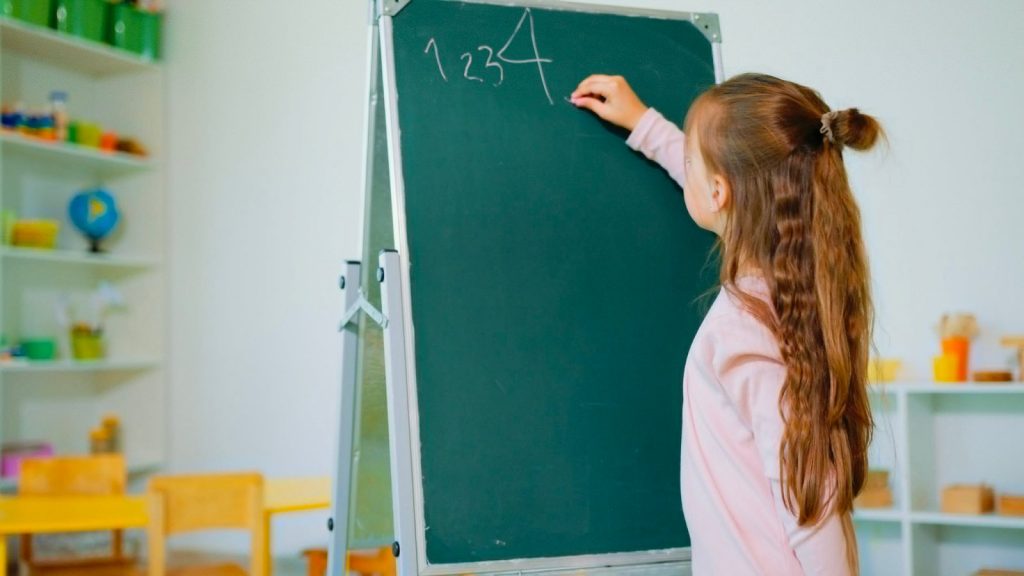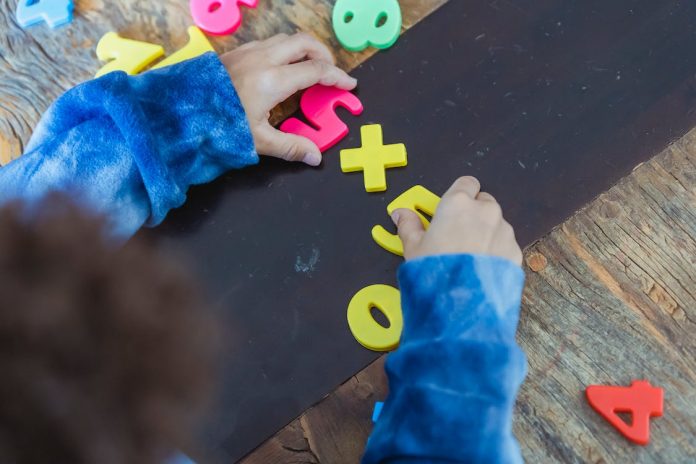- Step 1: Discourage Memorization
- Step 2: Show the Magic of Zero
- Step 3: Identify the Property of One
- Step 4: Start with Easy Numbers
- Step 5: Show Commutative Property
- Step 6: Show the Relationship Between Tables
- Step 7: Tell Them the Logic Behind Multiplication
- Step 8: Break Down the Number
- Step 9: Use Visuals
Are you a primary school math teacher? Are you trying to figure out how to teach multiplication to your students? Well, then, you have landed on the right post. We will discuss easy and fun ways to teach multiplication to your young students.
SplashLearn: Most Comprehensive Learning Program for PreK-5

SplashLearn inspires lifelong curiosity with its game-based PreK-5 learning program loved by over 40 million children. With over 4,000 fun games and activities, it’s the perfect balance of learning and play for your little one.
Try for freeMath is rarely students’ favorite subject. But it sets the fundamentals of most day-to-day life activities. Be it telling time or counting money, everything is math.
Among the four core elements of math (addition, subtraction, multiplication, and division), multiplication is the most crucial one. It sets the ground for many advanced mathematical concepts like algebra and calculus.
Besides this, learning tables improve children’s memory and mathematical skills. Thus, making your preschoolers fluent in multiplication gives them the confidence to solve complicated math problems and get better at math.
As a primary school math teacher, you are responsible for making multiplication fun and exciting for your class. If you get your students interested in math now, you can give them several prosperous academic years ahead. Don’t stress, though, for we are here to help!
Let’s explore some engaging and easy ways to teach multiplication to preschoolers.
Related Reading: How to Help Kids with Math: 6 Innovating Approaches
How to Teach Multiplication in 9 Easy Steps

Primary school is a stepping stone in a child’s academic development. It teaches vital subjects like multiplication that can help learn many new subjects.
Therefore, primary school teachers must make the subject interesting for students. Since the basics of multiplication revolve around memorizing tables, there is nothing much that teachers can do to make the subject interesting. Students have to learn tables on their own to move ahead in their grades.
However, there are some strategies teachers can use to simplify learning multiplication for their class. Here are the best strategies to teach multiplication to students in primary school:
Step 1: Discourage Memorization
Students often struggle with memorization. They find it challenging to learn and implement all the tables in a problem. Some children get so scared of table memorization that they fear doing math.
To prevent this, the best strategy is to show your class the relationship between multiplication and addition. This strategy can also help students understand the multiplication concept, which is repeated addition.
Use relatable examples to show your class how multiplication is based on addition. As your class would have already learned addition in previous lessons, making them comfortable with multiplication will take less time.
You can write these equations on your blackboard to help your struggling students with visuals:
3 x 3 is the same as 3 + 3 + 3
Or
4 x 2 is the same as 4 + 4
Step 2: Show the Magic of Zero
Before getting into complex numbers, you should show your students how zero works in mathematics. You can show them how adding a number to zero doesn’t change its value. But multiplying a number by zero also makes it zero.
Here, you can use this visual example:
n + 0 = n
But . . .
n x 0 = 0
You can also use examples to teach students how zero works in multiplication. For example, ask your students to count the number of chairs in the class, let’s say 25. After that, ask them to count chairs with monkeys on them; that’s zero.
Step 3: Identify the Property of One
Like zero, the number one is also easy to multiply. Any number that multiplies with one retains its value:
n x 1 = 1
You can use real-life examples to show the property of number one to your class. For example, a row on the calendar shows seven days of one week.
Step 4: Start with Easy Numbers
To make table learning easy, start with easy numbers that students can remember faster.
For example, after teaching the number zero and the property of one, you can show your class the tables of 10 and 11.
So, n x 10 = n0
Or
n x 11 = nn
Step 5: Show Commutative Property
Multiplication is also commutative, like addition. It means the order of factors doesn’t change the answer.
Simply put, you can multiply two numbers in any order, and the answer will be the same. For example, the answer for 2 x 5 or 5 x 2 will be the same 10.
This property can show your students that multiplication is easier than it looks.
Step 6: Show the Relationship Between Tables
Another simple step to teaching multiplication is showing your class the relationships between tables.
For example, you can highlight that when students learn tables up to 8, they automatically learn the table of 9 as the number 9 comes in all tables; students can skip learning its table.
This small relief can help to motivate students when they struggle with multiplication.
Step 7: Tell Them the Logic Behind Multiplication

If children try to memorize tables, they will soon forget them, too. So instead of making your students memorize tables, tell them the meaning behind multiplication, and they can use it in real situations.
For example, you can bring a box of donuts for your students and ask them to calculate the number of donuts in the box. Now, show your students that if they multiply the number of rows by columns, they can calculate donuts faster than counting each donut.
Step 8: Break Down the Number
If your students struggle with big number multiplication, you can show them how to break down the number.
For example, instead of multiplying 8 x 9, they can multiply as 8 x (5 + 4).
They can also implement the property this way, (8 x 5) + (8 x 4): 40 + 32.
Step 9: Use Visuals
Many studies have confirmed that students learn better through visuals. So, using visual learning aids is one of the best ways to teach multiplication.
For example, students can learn multiplication through animated games. The games let students understand the reason behind multiplication. Plus, visuals help in learning tables faster.
6 Fun Ways to Teach Multiplication to Students Who Struggle to Understand the Concept
To make multiplication easy for your students, you need to go beyond the regular teaching strategies. To make learning multiplication enjoyable and simple, here are some fun learning activities:
Fun Activity #1: Fun Virtual Games

Today, it is impossible to keep kids away from screens. So, you can use screens to your advantage to teach multiplication.
Turning to game-based learning can make learning multiplication engaging. These games can improve students’ concentration levels and math skills. The best part is that games like these remove the fear of failure many students struggle with. Multiplication learning games provide a safe environment where students can type in the wrong answer but still feel motivated to try again.
Fun Activity #2: Classroom Multiplication Activities

You can eliminate multiplication fear in the classroom through math games. For instance, you can play a simple “constant calculator” activity in your class.
Encourage your students to use the constant function on calculators to find the multiples of any number to understand the connection between addition and multiplication.
Here’s how it works:
- Choose a number, like 7, and enter it into the calculator.
- Press the + button first, then the = button. The calculator should once more display seven.
- Next, keep pressing the = button. Seven will be continuously added by the constant function, displaying the number’s incremental multiples (7, 14, 21, 28, and so on)
- You could ask students to list the multiples they discover and then challenge them to look for patterns in their list.
Fun Activity #3: Multiplication Songs
Every kid loves music. And it’s so much easier to learn anything that rhymes and has beats. So, you can find some good multiplication songs and play them in your class for fun math learning. You could even encourage the students to sing along as they learn.
You can find various multiplication songs on YouTube with animated videos. Some of the best multiplication song channels and websites are:
Fun Activity #4: A Friendly Math Competition
Competition is the best way to motivate students. You can host a multiplication fact competition in your class and offer a fun reward to encourage students to learn multiplication.
Here’s how it works:
- Split your class into two teams.
- Make two lines of students, with one line representing each team, and have them face one another.
- The instructor may hold up an equation or call out a multiplication fact.
- A student in the first pair (the kids facing each other) shouts out the solution.
- A point is awarded to the student who responds correctly in the first place.
- The instructor moves on to the following pairing as the students both sit.
- The instructor continues this until every student in the line has been addressed.
- The row that scores the most wins.
You can give the role of scorekeeper to a student if you have an odd number of students in your class. Pairing students at the same academic level to compete against one another can benefit them, too.
Fun Activity #5: Card Games
You can also use cards to teach multiplication to your students. Multiplication War is an old yet fun car game that can make multiplication learning fun.
Here’s how it works:
This game has two players. The cards are dealt face down in two piles by one student after they have been shuffled. Both students flip over the top card from their face-down pile after counting down (3, 2, 1, GO!).
The set is won by the first pupil, who correctly multiplies both numbers on the cards. When all of the cards have been used, the student with the most sets wins.
Be sure to assign a number to the Ace, Queen, and King if you plan to use them from the deck. For instance, the Ace might be worth zero, the Jack might be worth one, the Queen might be worth eleven, and the King might be worth twelve. Don’t forget to take out the jokers!
Fun Activity #6: Multiplication Name Tags
This activity is a great way to teach multiplication. It can help students learn tables without even trying.
Here’s how it works:
Make multiplication name tags for yourself and everyone in your class. Everyone should go by the “name” throughout the day. Someone’s name for the day would be 24 if, for instance, they were wearing the tag “8 x 3”. Set aside a specific time each day for students to stand up and make introductions. Good morning; my name is 80 (8 x 10) or 25 (5 x 5).
Related Reading: Easy Ways to Make Math Fun for Kids
Conclusion
As you can see, using a creative approach to teaching multiplication to your students will help them learn and retain the concepts.
Innovative methods can make math simple and interesting for your students. So, use visuals, games, activities, and different strategies to make multiplication fun.
For multiplication games, you can always check out free SplashLearn games. We have a wide range of free games for preschoolers and elementary students.
Frequently Asked Questions (FAQs)
How can I teach multiplication to students who have math anxiety?
- Here’s how to teach multiplication to students who seem overwhelmed with the topic in 4 easy steps:
Step 1: Divide the information into manageable portions.
Step 2: Use a straightforward visual to provide context to the fact.
Step 3: Show the student how to use the simpler facts as a springboard for the more difficult ones.
Step 4: Work on mastering each table separately.
How can I teach my ADD/ADHD students how to multiply?
Lay out the cards one at a time for your students to multiply after explaining what you want them to practice (such as 9 x tables) and setting a timer for one minute. Give them the answers to any questions they get wrong so they will have a better chance of answering correctly the next time the number is called. Target 20–30 facts per minute.
How do you teach multiplication to a third grader?
Students can express multiplication issues using arrays. They can use beads, blocks, bottle caps, paper clips, or other objects to complete them on a grid or just on their desks.
When should a child start learning multiplication facts?
Most experts concur that children start learning their tables between the ages of five and eight. They can begin to comprehend how their numbers interact with one another as they start to become more conscious of their numbers.

















